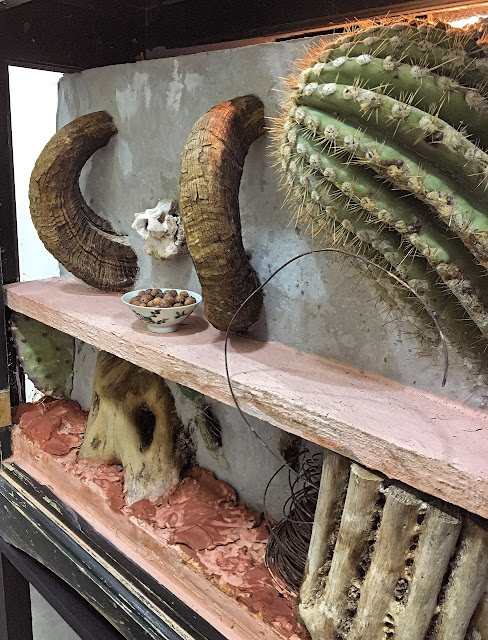It’s Only A Matter Of Time
Statement by Olivier Dubois-Cherrier
As a person I am very sensitive to my environment. When I say environment I am encompassing everything such as: landscape, organization of the urban spaces, size of the city, architecture of buildings, fluidity of traffic, relationship between people in terms of kindness, selfishness, and so on. As an artist I feel a heightened sensitivity and I know that my overall mood and mental health will depend on these environmental conditions.
Like Cy Twombly, when I make a piece of art I strive to conjure moments of genesis and creative hedonism that exist before ideas attain full expression as conventional images or language. I want very much for my work to take advantage of the instinctual impulses that lie beneath rational thought. However, because my genuine gestures need to be fed with meanings, my philosophical vision of the world helps me to better understand human nature and thus become more tolerant within myself. When I heard Gilles Deleuze state in an interview given in 1988, “If one is not ashamed to be a human being, then he doesn’t make art”, I understood better why it was so difficult for me to find the boundaries between my idealistic visions of human presence on this earth and the reality of our everyday life.
The title, It’s Only a Matter of Time, came to me after reading various books about the concept of time. Albert Einstein deconstructed the linear concept of time to be divided in regular and rigid sequences with his Relativity of Time theory. Bachelard also wrote in his The Intuition of The Moment “Time is nothing if nothing happens. (…) Eternity before the creation makes no sense, nothingness cannot be measured and thus I believe time should be related to any individual.” And lastly I feel very inspired by the gypsy proverb “After tomorrow, tomorrow will be yesterday” that expresses this unique time, variously modified; but always looking the same. The idea of time becomes confused with the intrinsic times of the nature and of the Cosmos. “The wise Gypsy wants the time that wants him. He wants the past that was and the future that will be, because he knows he cannot do anything about time given that it is the time which can everything about him” writes Michel Onfray in his Cosmos.
There is an ambiguous relationship between humans and time because of their inability to accept their own finiteness. In our contemporary world, the demand of performance coupled with the concept of time contributes to the denial of ripening, and aging and maintains the dramatic taboo we have about decay and death.
The pieces titled Esthetics of Decay numbers 1 through 6 are composed of pieces of wood coming from a Saguaro found in a dumpster on private property. Integrating still decaying natural matter with a more stable manmade composite block shows how beautiful and peaceful the acceptance of the limited lifespan of things could be.
The two furniture pieces filled with living and dead organisms, and mixed with concrete and clay are entitled Preservation Cabinet #1 and #2. The hoarding in these two pieces is more or less random and suggests various human intentions about the complexity of selecting what one should preserve and eventually repair while our contemporary way of living destroys the most sensitive and fragile species. With this body of work I want to investigate our best sensibilities when we are not pressed by modern necessities or greed. My intention is to illustrate the inconsistencies of our various politics and actions regarding preservation.
Ambivalent Coexistence (numbers 1 to 4) are made of living cacti bought in commercial places, and that I have more or less incarcerated within steles of concreteletting their roots grow into a block of soil and I offer them the possibility to be exposed to the outside light they need to survive. These sculptures intend to show through living organisms the effects of the perverse systems we create. It can be considered as much a critique of psychological attitudes as it is a metaphor about sociological and political systems. If the plants survive, their organic properties will be irreversibly modified. At stake in these artworks is a fight between narcissistic oppression and resilience.
And finally the paintings, The Origins, Our Contemporaneity and Rebirth are studies for the project that inspired my choice of Arizona to study and work in the near future. This work will address the alteration of our environment with the natural forces through time, as well as the effects of human presence.
My desire to become a land artist is for me the best way to resist the noise of the world and the nihilistic standardized white spaces offered by our contemporary art scene. The post-modernist theorists, scientists, intellectuals and artists have expended great deal of energy in deconstructing the various systems that make our actual civilization. We have reduced everything into such small parts (ideas, theories, matter…) around us that we have great difficulties today to see life in a poetic way. I want to initiate a kind of controversial step toward Arrière-Garde a term coined by Kenneth Frampton in his essay Towards a Critical Regionalism and suggest ways to drive mankind in a less nihilistic direction.
Like the situationnistes (Guy Debord) I am hard at work developing artistic practices to counter the effects of spectacle.
Ambivalent Coexistence #1,2,3
Esthetic of Decay #1-5
Preservation Cabinet 1
Preservation Cabinet #1 detail
Preservation Display
Seeking an Island in Me
Sentinel #1







No comments:
Post a Comment